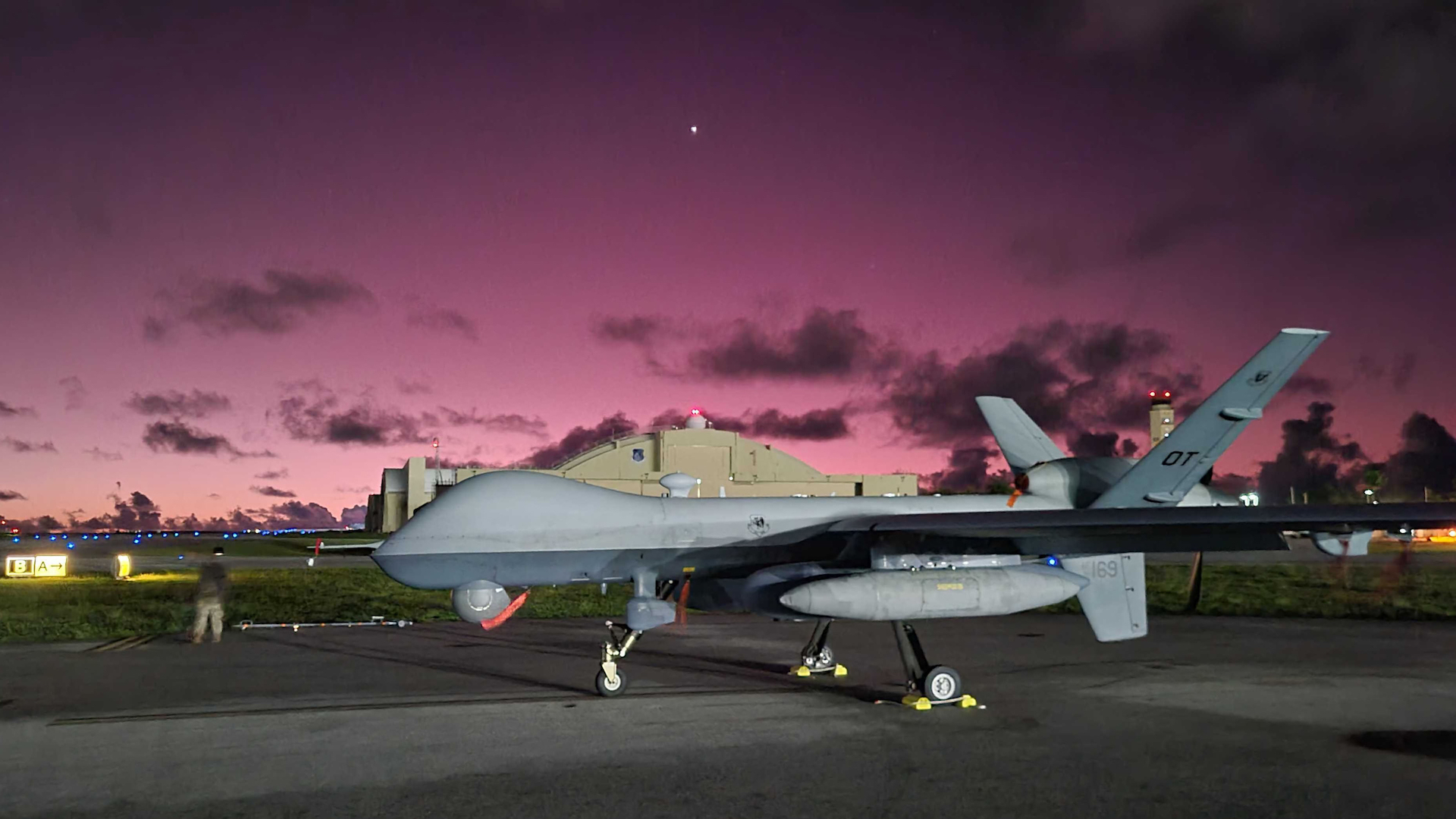The U.S. Air Force brought together more than 30 MQ-9 Reaper drone squadrons for the latest iteration of the Reaper Smoke competition, scenarios in which included simulated missions over the highly strategic and tumultuous South China Sea. This is an interesting development in as much as there have been questions about the utility of the MQ-9 in that kind of context, although Air Force Special Operations Command, in particular, has been looking at ways of ensuring the Reaper is relevant in contested or denied environments.
The South China Sea context in Reaper Smoke 2024 was brought to wider attention by @IntelWalrus on the social media platform X. A closer look at a photo published by the Pentagon’s Defense Visual Information Distribution Service (DVIDS) shows a computer monitor displaying a map that includes Mischief Reef, an atoll in the east of the Spratly Islands in the South China Sea.
Located around 130 nautical miles west of Palawan Island in the Philippines, Mischief Reef is claimed by China, Taiwan, and Vietnam, although it’s located well within the Philippines’ exclusive economic zone (EEZ). However, China has controlled the atoll since the mid-1990s and more recently has used it to build a large artificial island, including a harbor, as well as an 8,675-foot runway, part of its efforts to assert claims over this and other disputed shoals in the South China Sea.
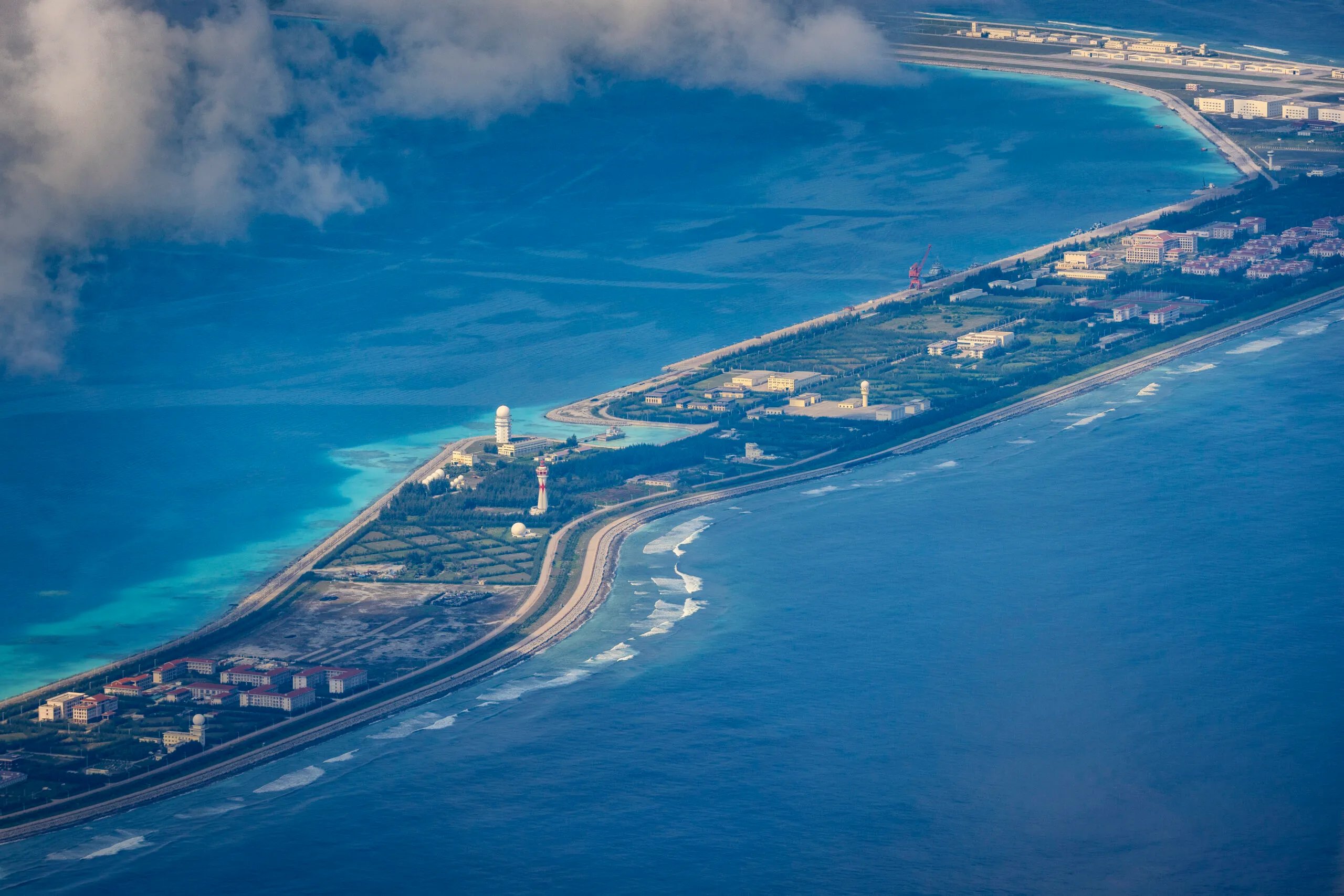
As for how Mischief Reef was employed as part of a scenario in Reaper Smoke is unclear, with the accompanying DVIDS text not making any mention of an Indo-Pacific angle to the competition.
What we do know is that this was the fifth edition of the annual Reaper Smoke exercise, and it took place at Hurlburt Field, Florida, from September 5-6. It was organized there by the resident 2nd Special Operations Squadron.
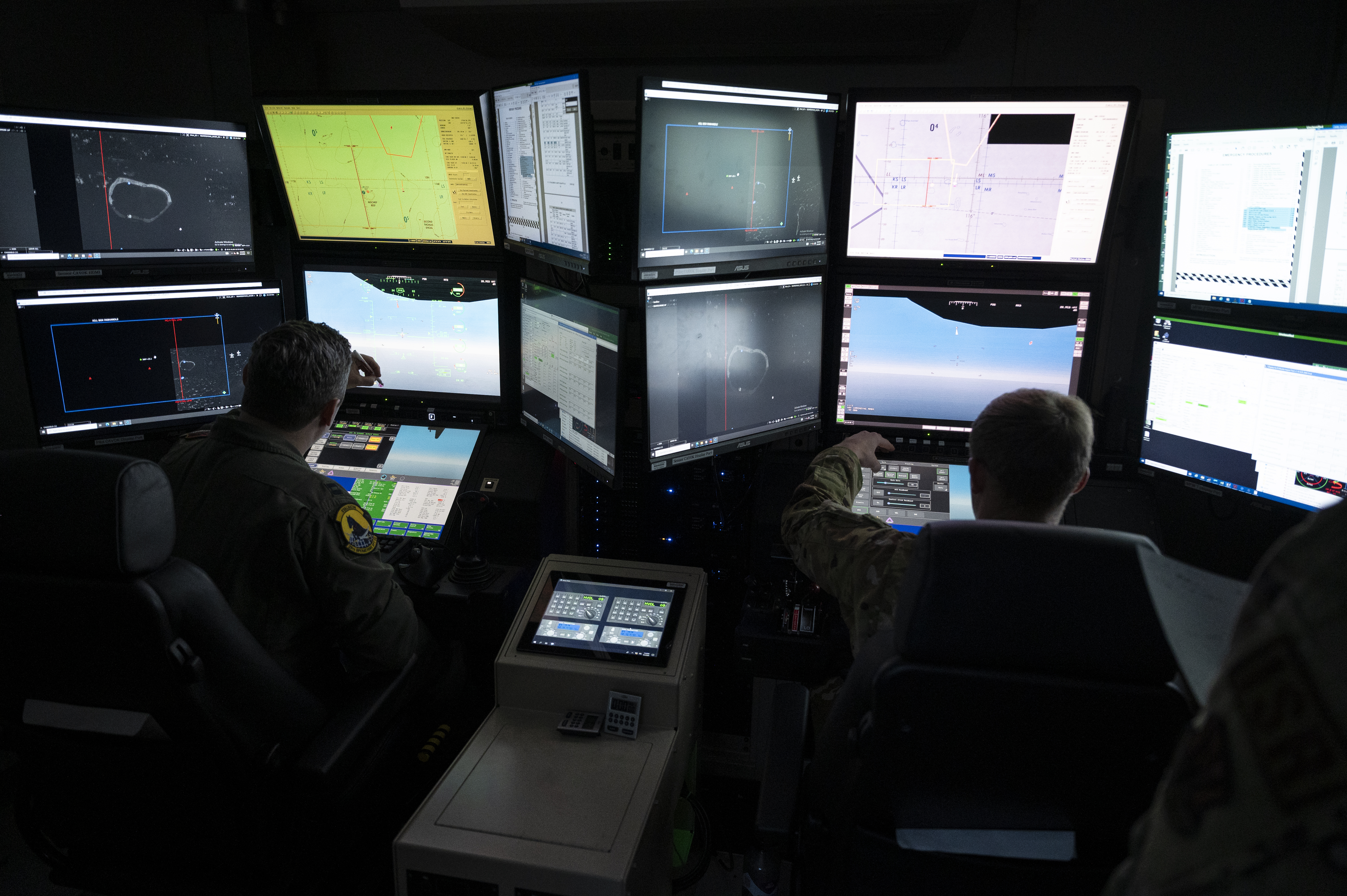
Inspired by the Air Force’s famous Gunsmoke competition launched in 1949, Reaper Smoke sees MQ-9 pilots and sensor operators from across the Air Force take part in 30-minute tactical scenarios aimed to test their abilities and decision-making. According to a media release, the competing crews faced “challenges that ranged from general tactical maneuvers to specialized skills requiring precise and advanced techniques, reflecting the evolving nature of modern warfare.”
The 196th Attack Squadron from the California Air National Guard sealed the victory, but as well as the competitive rivalry between units, Reaper Smoke provides a platform for the exchange of MQ-9 tactics and strategies.
“When it comes to the fight of tomorrow, we’re all going to be working together,” Staff Sgt. Francisco Rivera-Monge, 2nd SOS MQ-9 sensor operator and combat operations noncommissioned officer said in an official media release. “Understanding each other’s capabilities is the key to success when it comes to MQ-9 survivability and the contribution in the fight for tomorrow.”
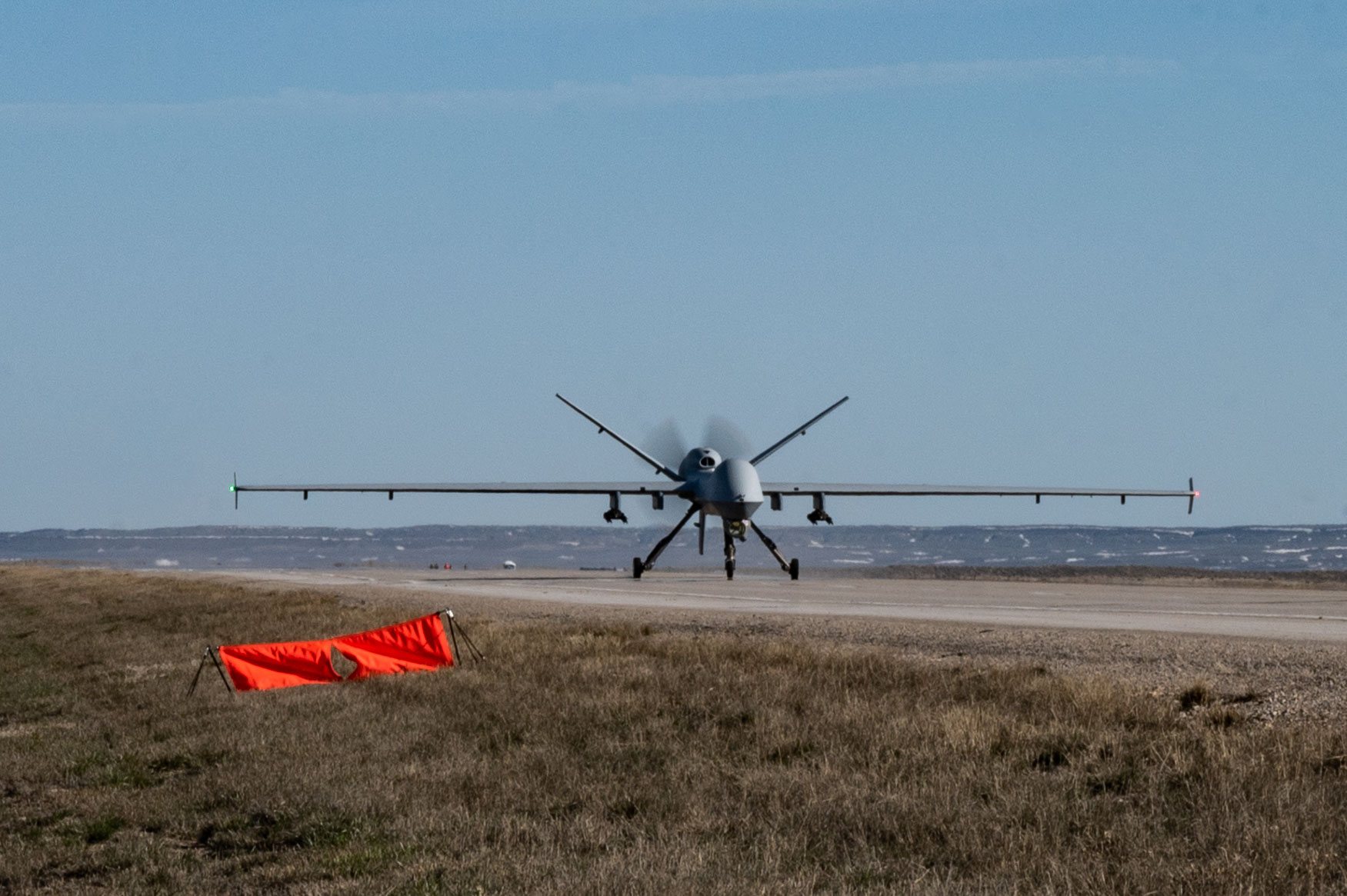
With briefings from leaders across the MQ-9 community, the competition will also have provided insight into how Hurlburt Field’s 2nd Special Operations Squadron and the broader Air Force Special Operations Command (AFSOC) envisage using the Reaper in future contingencies.
It’s here, perhaps, that the apparent focus on the South China Sea — for at least a portion of the competition — is notable.
“Air Force Special Operations Command is focused on specialized air power,” explained Col. Mark Jones, chief of the AFSOC Concepts and Capabilities Development Division. “The MQ-9 inside AFSOC is focused on training the fundamentals — training airmen to be skilled and adapt to use the MQ-9 in ways we haven’t used it before, for the future.”
One of the ways that AFSOC is planning to use the Reaper, especially in a conflict with China in the Indo-Pacific theater, or with other near-peer and peer adversaries, is the Adaptive Airborne Enterprise concept, or A2E. This is part of broader efforts within the command to adapt to the reality that future conflicts are likely to be fought against much more capable adversaries, after decades of counterinsurgency and counter-terrorism operations.
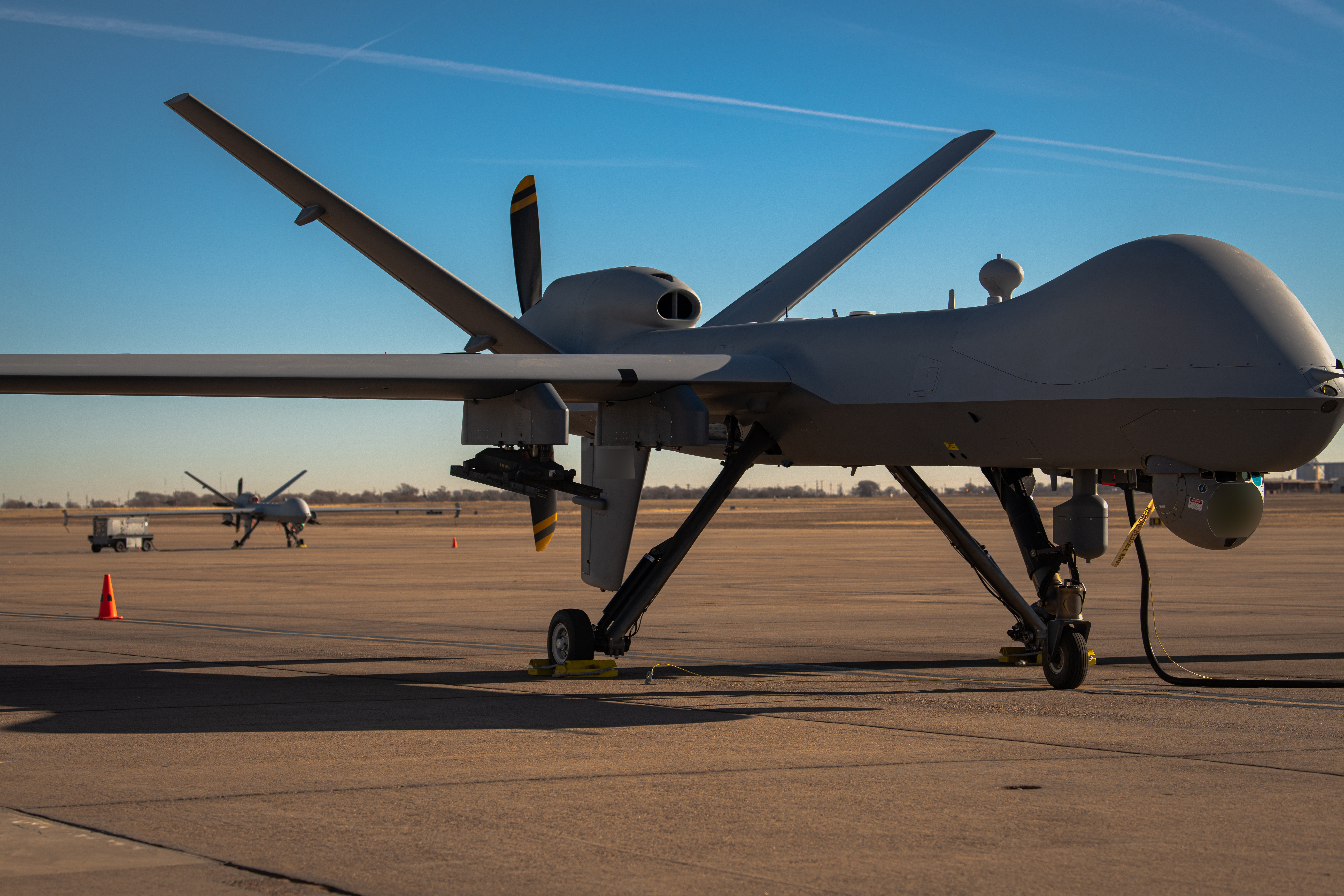
Above all, A2E plans to find ways to ensure the MQ-9 is relevant for future contingencies, by expanding its mission repertoire beyond the more familiar intelligence, surveillance, and reconnaissance (ISR) and strike operations.
“Adaptive Airborne Enterprise is vital to thickening the Joint Force kill web throughout the spectrum of conflict and continues to be AFSOC’s number one acquisition priority,” Lt. Gen. Tony Bauernfeind, AFSOC commander said earlier this year. “Our Air Commandos are incredibly innovative, capable, and driven… they are bringing A2E to life. We will continuously develop the concept to full capability through multiple demonstrations over the next few years.”

AFSOC’s development of A2E has been broken down into five phases, of which the first three were already underway as of January this year. They are as follows:
- Phase one, replacing the traditional stationary drone control system with a new A2E interface to create a much-reduced deployed footprint, optimized for austere locations.
- Phase two, developing a capability for a single crew to fly multiple MQ-9s.
- Phase three, developing a capability for a single crew to fly multiple types of drones, ranging from small Group 1 types like the RQ-11B Raven to larger Group 5 ones like the Reaper.
- Phase four, a single crew will control formations of drones from mobile and austere locations.
- Phase five, establishing new “effects-based ISR units.” According to AFSOC, as well as drones, these units could include “forward-deployed ground forces, cyber operators and space operators that can collaboratively employ UAS capabilities in permissive, contested or denied environments.”
The first three phases of A2E were demonstrations conducted last year at Cannon Air Force Base, New Mexico, in Exercise Talon Spear, hosted by the 27th Special Operations Wing.
Last December, meanwhile, the A2E demonstrations were expanded to include a single drone crew controlling three MQ-9s via a single common control interface, as well as attaching and air-launching a Group 2 drone from an MQ-9A.
The capability for one drone to launch and recover other, smaller drones in flight is something that the U.S. military at large is showing increasing interest in. It also has particular resonance in the Indo-Pacific, where long distances are the norm, airspace will likely be heavily contested, and the maximum number of assets will likely need to be brought to bear to achieve the desired effects.

As we have explored in the past, the shift from U.S. military operations in almost exclusively permissive environments, towards future conflicts in contested and denied spaces, has led to a recognition of the vulnerability of the MQ-9 and similar platforms. This issue would likely be particularly acute in a future conflict with China in the Indo-Pacific. Even in Yemen, where the anti-aircraft threat is an order of magnitude lower than it would be in a war with China, several U.S. military Reapers have already been brought down, with Houthi officials claiming eight examples of the drone shot down since the start of the war on Gaza.
Giving the Reaper the ability to act as a ‘mothership’ for other smaller drones, including ones with standoff sensor payloads, as well as loitering munitions, is one way to get around the problem and maximize its potential. Other survival measures that should help improve the survivability of the MQ-9 include using its own standoff sensors, making better use of intelligence, working with combined forces, as well as self-protection capabilities including electronic warfare pods and air-to-air missiles.

www.twz.com
Ultimately, A2E envisages an MQ-9 controller also being responsible for controlling swarms of drones and being able to have these operate from dispersed and austere locations. In this scenario, the Reaper would also be expected to function as a data transport node, ensuring long-range communications and establishing the mesh networks required for complex drone operations, including swarms.
One potential threat to the MQ-9 is a budgetary one, especially now, with a raft of other big-ticket programs for the Pentagon to fund. If it’s determined that the Reaper is no longer so relevant, the program could be scaled back and further airframes withdrawn. This also helps explain why AFSOC and others are scrambling to find new ways to employ these drones in contested battlespaces. A similar issue currently affects another niche Air Force platform, the AC-130 gunship, as discussed in the video below.

As to Mischief Reef, it’s not clear whether the presence of this location in a Reaper Smoke scenario implies that the Air Force is already looking specifically at options for operating MQ-9s in this area. However, it is notable that the U.S. military has stepped up its MQ-9s operations from the Philippines.

Reapers were deployed to the Philippines for the first time in April 2023, when a pair of MQ-9s from the California Air National Guard’s 163rd Attack Wing operated from the former U.S. naval air station at Subic Bay on the Philippines’ main island of Luzon. From here, the drones flew ISR missions during the annual Balikatan exercise.
Meanwhile, tensions between China and the Philippines in the South China Sea have been notably high in recent weeks, with an uptick in maritime confrontations. These have been centered around Sabina Shoal, another disputed atoll in the Spratly Islands.
Manila has repeatedly accused Chinese maritime forces of ramming its vessels, blasting them with water cannons, and firing flares toward its aircraft.
The Philippines points out that Sabina Shoal, like Mischief Reef, lies within its EEZ, meaning it has the right to build and construct in the area. Beijing, however, claims large swathes of the South China Sea as its own, despite an international tribunal in the Hague rejecting its arguments.
Tensions in the South China Sea, a strategically important waterway linking the Indian and Pacific Oceans, show no sign of dissipating, and, against this backdrop, it’s very interesting, at the least, that the Air Force is building training scenarios around the flashpoint of Mischief Reef.
Contact the author: thomas@thewarzone.com
